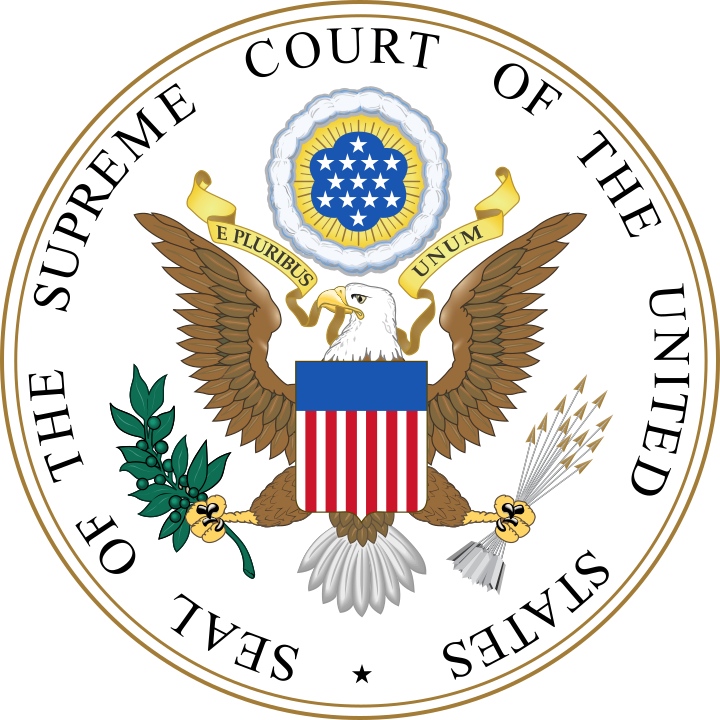 As summer approaches, nobody can accuse the Supreme Court of the United States of succumbing to a June swoon, with the nation’s highest federal court having rendered decisions in nine cases. Its most recent task came yesterday through Minnesota Voters Alliance v. Mansky, a scrap that dates back to November 2010 and that the judges had been dissecting since Feb. 28. By a 7-2 margin, the court, while acknowledging states’ “permissible objective” to institute a few polling place prohibitions, decided that Minnesota has violated the First Amendment’s Free Speech Clause by keeping voters from donning buttons, hats and T-shirts bearing political views when they head to polling locations.
As summer approaches, nobody can accuse the Supreme Court of the United States of succumbing to a June swoon, with the nation’s highest federal court having rendered decisions in nine cases. Its most recent task came yesterday through Minnesota Voters Alliance v. Mansky, a scrap that dates back to November 2010 and that the judges had been dissecting since Feb. 28. By a 7-2 margin, the court, while acknowledging states’ “permissible objective” to institute a few polling place prohibitions, decided that Minnesota has violated the First Amendment’s Free Speech Clause by keeping voters from donning buttons, hats and T-shirts bearing political views when they head to polling locations.
The promotional products industry makes its bones by helping end-users to proclaim pride in their preferences, with logos and images serving as the coveted means to convey said affinities. Minnesota, however, had sought to suppress the presence of overtly political-in-nature garments and objects, making it among the 10 states that wish to make primary and election day sites free of any visual aids, so to speak, that could complicate voters’ desires to perform a civic duty. More specifically, officials have been taking umbrage with goods that might inspire “confusion, interference or distraction” in what should be “an orderly and controlled environment.”
From a legal and economic standpoint, this Supreme Court case has always merited status as a must-follow matter, especially with how it relates to promotional material. Suppliers and distributors are constantly called on to team up to present buttons, hats, T-shirts and other goods that leave no mystery about customers’ stances on topics, admiration for teams or organizations and regard for celebrities, just to name a few uses of their handiwork. While looking to maintain even keel settings in the Gopher State, Minnesota overseers took it upon themselves to ban all political items. And, while that definitive adjective could have sufficed, especially since U.S. Court of Appeals for the Eighth Circuit judge Duane Benton had reiterated its use in a rendering, the Voters Alliance refused to go gentle into that good night.
Minnesota Voters Alliance v. Mansky. Decided 06/14/2018 https://t.co/aa0O10x3ok
— SCOTUS Updates (@USSupremeCourt) June 14, 2018
Andy Cilek, who found himself subjected to a five-hour polling place waiting period after officials had balked at his Tea Party-affiliated shirt and “Please I.D. me” button, led the charge against the state, commenting ahead of the case’s winter beginning that he wishes “simply to wear what I want when I vote and to vote peacefully.” To vote in such a way, one could argue, could be a very subjective task, and the Supreme Court gave homage to that, yet it critiqued the Minnesota law as not “capable of reasoned application.” Chief Justice John G. Roberts, Jr., writing for the majority, offered that perception and added that the failure by the state’s officials to “articulate some sensible basis for distinguishing what may come in from what must stay out” made the matter relatively easy to dissect and deliver a verdict on.
Due to an abundance of “political connotations” on products and goods, as Justice Samuel Alito asserted in February, decisions surrounding permissible versus inadmissible buttons, hats and T-shirts became too much of a guessing game for those tasked with working the polls. That became clear in the winter when a state-hired attorney explained before the Supreme Court that nobody had reached a consensus on the appropriateness of the wide range of messages or allegiances that voters could display on their chosen attire.
It could be a quick and perhaps somewhat efficient point to say that those eager to head to polls should refrain from anything that reveals even a trace of support for a cause or candidate. However, the verdict shows that, much like end-users have the freedom to blare their inclinations when attending, say, a sporting event, they should have the same ability, via apparel, to make known their political bent. Though Minnesota has long held that polling places are speech-free zones and non-public forums, its attempts to uphold those views fly directly in contrast to First Amendment rights, according to the Supreme Court.
Given that nine more states enforce bans, one might be curious to see if voters see this decision as inspiration to make like Cilek and his peers and bring litigation against officials. What could that mean to the workload for Roberts and the other Supreme Court justices? More importantly, perhaps, what could it signify for promotional products industry personnel as they look to satisfy end-users’ interests in touting their connections to whatever candidate, cause or issue they feel like backing?


